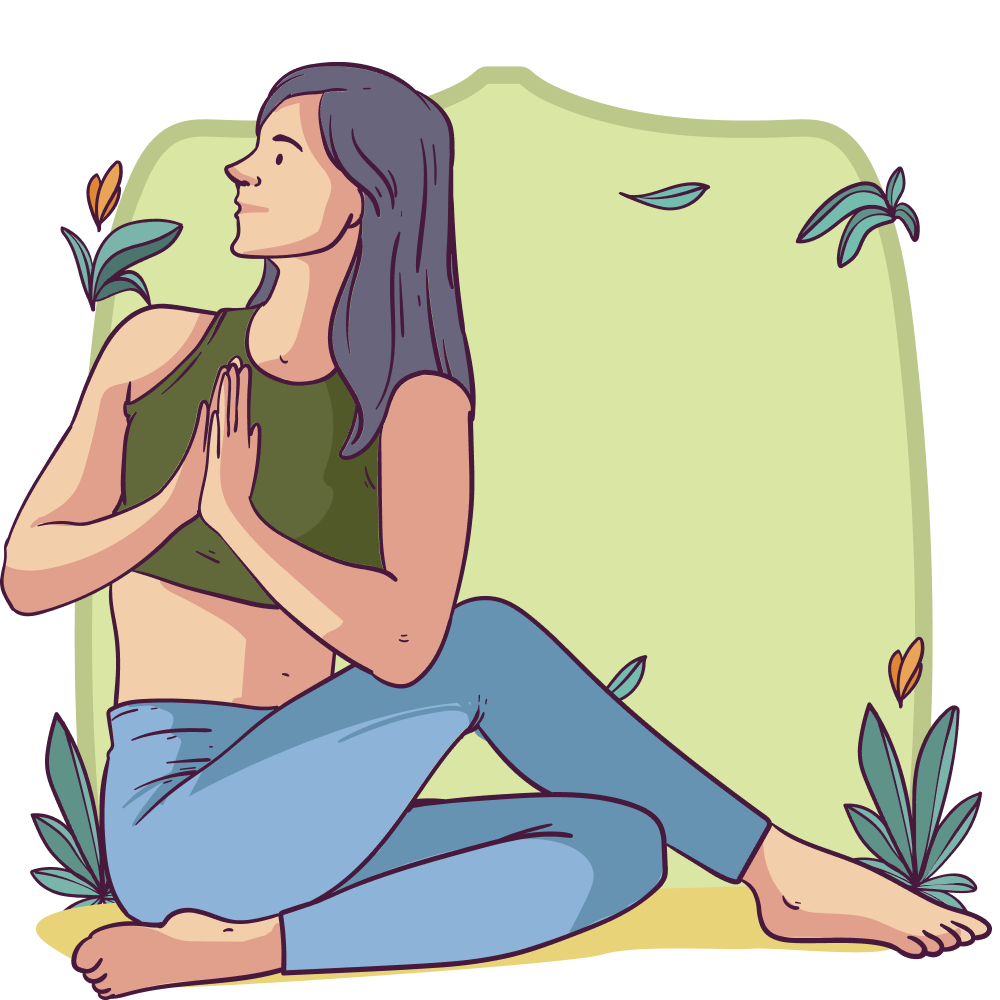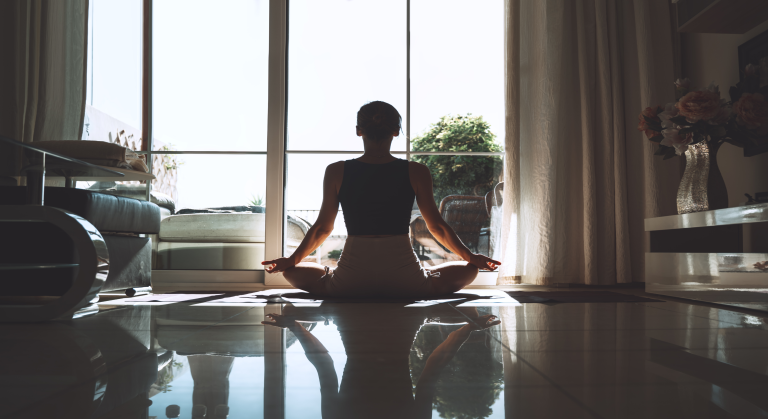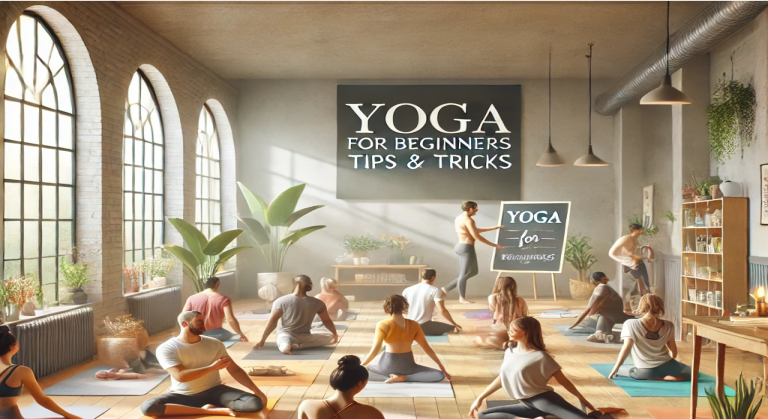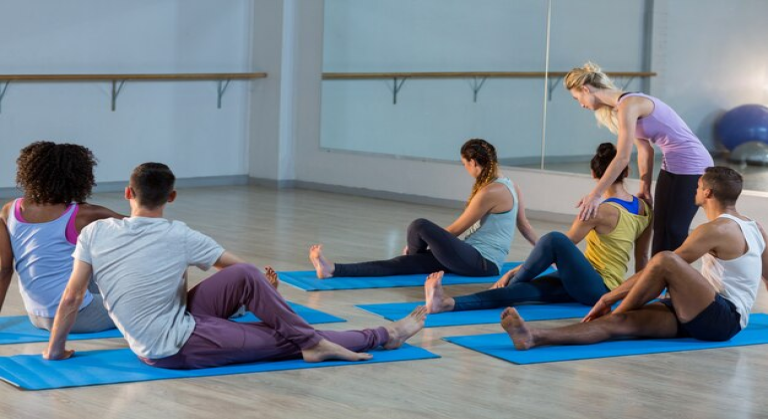Many people find it difficult to get a decent night’s sleep in the hectic world of today. Yoga, which is well-known for encouraging attention and relaxation, provides practical methods for raising the quality of sleep. You can create a calming environment that gets your body and mind ready for sleep by incorporating mindfulness activities, soft positions, and breathing exercises into your bedtime routine. This blog delves into a variety of yoga poses that can help you fall asleep and wake up feeling rejuvenated and ready to take on the day.
Techniques for Better Sleep
Gentle Evening Poses
Child’s Pose (Balasana)
This pose gently stretches the back, hips, and shoulders while promoting deep relaxation. It calms the mind and releases tension, making it easier to prepare for restful sleep. For personalized guidance, schedule a session with the My Yogi app.
Legs Up the Wall Pose (Viparita Karani)
By elevating the legs against a wall, this pose promotes blood flow back to the heart and encourages deep relaxation. It helps to reduce stress and fatigue, making it easier to transition to sleep.
Forward Fold (Uttanasana)
This forward bend stretches the spine and hamstrings, easing both physical and mental tension. It calms the nervous system and prepares the body for a restful night’s sleep.
Breathing Exercises for Relaxation
Deep Belly Breathing
Taking slow, deep breaths into the abdomen, fully expanding the diaphragm, stimulates the parasympathetic nervous system. This lowers the heart rate and reduces stress, creating a calming effect that prepares the body for sleep.
4-7-8 Breathing Technique
By inhaling for 4 seconds, holding the breath for 7 seconds, and exhaling slowly for 8 seconds, this method helps to regulate the nervous system and slow down the mind. It reduces anxiety and promotes relaxation, making it easier to fall asleep.
Alternate Nostril Breathing
This practice involves breathing through one nostril at a time while closing the other. It helps to balance the left and right sides of the brain, reduces stress, and calms the mind by creating a rhythmic breathing pattern that enhances overall relaxation. Book a session with the My Yogi app to master this technique.
Mindfulness and Meditation Practices
Guided Meditation
Guided meditation involves following verbal instructions or imagery provided by a guide, which helps to focus on your mind and ease anxiety. This method creates a mental escape from daily stressors, fostering a sense of calm and facilitating a smoother transition to sleep.
Body Scan Meditation
This practice involves mentally scanning different areas of the body to detect and release physical tension. Directing attention to each part of the body, it helps in promoting deep relaxation and preparing the mind and body for restful sleep.
Gratitude Practice
Reflecting on positive events and aspects of your day helps shift your focus away from worries and stress. This practice cultivates a sense of comfort and peace, creating a calm mindset that supports better sleep.
Creating a Sleep-Friendly Environment
Establishing a Routine
Consistent Timing
Practicing yoga at the same time each evening helps signal to your body that it’s time to wind down. This regularity reinforces a consistent sleep schedule, making it easier for you to fall asleep each night.
Personalized Sequence
Create a personalized sequence of yoga poses and relaxation techniques that you enjoy. Repeating this sequence nightly allows your body and mind to associate these activities with bedtime, enhancing their calming effects.
Setting the Mood
Lighting Adjustments
Dimming the lights or using soft, warm lighting creates a calming atmosphere. This helps your body recognize that it’s time to relax, aiding the transition to sleep.
Comfortable Space
Arrange your sleeping area with cozy blankets, cushions, and calming colors. A comfortable environment is essential for relaxation, making it easier to wind down and drift off to sleep.
Incorporating Aromatherapy
Lavender Essential Oil
Lavender is known for its calming properties. Adding a few drops of lavender essential oil to your diffuser or pillow can enhance your relaxation, making it easier to fall asleep.
Chamomile Scent
Chamomile has a soothing scent that can promote relaxation. Consider using chamomile essential oil in your bedtime routine to create a peaceful environment that encourages restful sleep.

Yoga Poses for Better Sleep Hygiene
Reclining Bound Angle Pose
This restorative pose involves lying on your back with the soles of your feet together and your knees falling open, creating a gentle stretch in the hips. It helps to open the hip area and release tension throughout the lower body, fostering deep relaxation. By calming the nervous system, it creates a soothing environment, making it easier to drift into sleep.
Savasana
As the final pose in a yoga practice, Savasana involves lying flat on your back with your arms and legs comfortably spread. This pose promotes complete physical and mental relaxation, allowing the body to fully absorb the benefits of the practice. It calms the mind, reduces stress, and is an ideal way to prepare for deep, restorative sleep.
Evening Journaling and Reflection
Writing Down Thoughts
Before bed, take a few minutes to write down your thoughts and any lingering worries. By putting your thoughts on paper, you can clear your mind and make it easier to relax and fall asleep.
Gratitude Journal
Reflecting on the positive aspects of your day and noting them in a gratitude journal can shift your focus from stress to satisfaction. This practice helps foster a peaceful mindset that is conducive to sleep.
Progressive Muscle Relaxation (PMR)
Tension and Release
Progressive Muscle Relaxation involves tensing and then slowly releasing each muscle group in your body. This technique helps in releasing physical tension and creates a deep sense of relaxation, making it easier to fall asleep.
Guided PMR Sessions
Listening to a guided PMR session can enhance the effectiveness of this technique. Following the instructions to tense and release each muscle group ensures you’re fully engaging in the process, which can lead to deeper relaxation.
Regular Practice
Incorporating PMR into your nightly routine can train your body to relax more quickly and deeply. Regular practice makes it easier to unwind at the end of the day, supporting better sleep quality.
Incorporating yoga into your nightly routine can greatly improve the quality of your sleep by promoting relaxation, reducing stress, and preparing your body and mind for rest. By integrating gentle poses, breathing exercises, mindfulness practices, journaling, and progressive muscle relaxation, you can establish a calming pre-sleep ritual that supports deeper, more restorative sleep. Embrace these yoga techniques to enhance your sleep hygiene and wake up feeling refreshed and rejuvenated.
Enhance your sleep quality by integrating yoga into your nightly routine. Whether you’re a beginner or an experienced practitioner, the MyYogi App offers personalized yoga sessions tailored to your needs. Choose from a variety of gentle poses, breathing exercises, and mindfulness practices to create a calming pre-sleep ritual. Download the MyYogi app today to schedule on-site or personal sessions and start your journey toward better, more restorative sleep.





